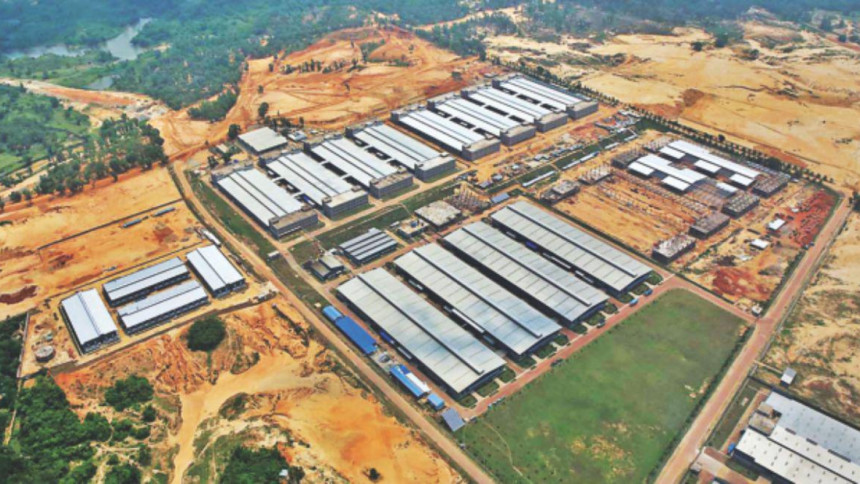How to make Special Economic Zones successful

Special Economic Zones (SEZs) are geographically delineated 'enclaves' in which regulations and practices related to business and trade differ from the rest of the country and therefore all the units therein enjoy special privileges. SEZs can generate both static and dynamic benefits. Static benefits include employment creation, export growth and rise in government revenues; whereas dynamic benefits include economic diversification, innovation and transfer of technology through foreign direct investment (FDI), and skills upgrading.
The basic idea of SEZs emerges from the fact that, while it might be very difficult to dramatically improve infrastructure and business environment of the overall economy 'overnight', SEZs can be built in a much shorter time, and they can work as efficient enclaves to solve these problems. With these aforementioned objectives in consideration, Bangladesh Economic Zones Authority (BEZA) was instituted by the government in November 2010, based on the Bangladesh Economic Zones Act, 2010, with the aim of establishing 100 SEZs across the country by 2030.
Weak infrastructure and poor business environment are critical problems for Bangladesh in attracting both domestic investment and FDI. According to the 2017 Doing Business index of the World Bank, Bangladesh ranks 176th among 190 countries. In terms of sub-components of the Doing Business index, Bangladesh's worst performances are observed in the areas of 'enforcing contracts', 'getting electricity' and 'registering property' with rankings of 189th, 187th and 185th respectively.
There is no denying that rapid and sustained economic growth is very important for the Bangladesh economy on its way to becoming a middle income country. The importance of SEZs, aimed at propelling both domestic investment and FDI for rapid and sustained economic growth in Bangladesh, can't be undermined. However, to make the SEZ initiatives successful, several issues need to be addressed carefully.
First, SEZs have to deliver what they promise. The standards of infrastructure and business environment within SEZs have to be up to the global standard. Delays in implementation and unsatisfactory delivery of services would make the SEZs unsuccessful. One important issue related to the faster implementation of SEZs is the solution of the land issue. In Bangladesh, with a huge scarcity of land and overwhelming disputes over land, this will however remain a big challenge. In this context, the contrasting experiences of China and India are very relevant. While China was very successful in establishing well-functioning SEZs by effectively addressing infrastructural and land issues, India in most cases failed to do the same. It is, therefore, very important to understand why India's SEZs haven't been successful so far, and what lessons Bangladesh can draw from those experiences.
Second, while SEZs are aimed at creating 'efficient' enclaves, improvements in the business environment and infrastructure of the overall economy can't be overlooked. If there are vast differences in the quality of infrastructure and business environment between SEZs and rest of the economy, then excessive and continued external support would be needed for the survival of SEZs, which can have large financial implications.
Third, the SEZs would need to be connected to 'efficient' sea and land ports. Otherwise, many of the benefits of the SEZs would be lost. Therefore, port infrastructure and its efficiency would need to be improved substantially. Furthermore, the quality of roads, connecting SEZs and ports, would need to be upgraded. In contrast to India, China's success was in establishing SEZs nearby efficient ports and developing much improved road networks connecting SEZs with those ports. Likewise, SEZs in Bangladesh should also be located keeping in mind the ongoing efforts of regional connectivity and economic corridors involving many South and Southeast Asian countries.
Fourth, SEZs in Bangladesh should aim for facilitating economic and export diversification leading to progressive structural transformation of the economy. Emphasis should be on production of high value-added and diversified products. Therefore, sectors with high potentials of economic and export diversification should get the priority in the SEZs.
Fifth, with respect to the question on which sectors to get the priority in SEZs, it should be kept in mind that apart from very weak country-wide infrastructural and business environment related problems, many potential sectors also suffer from some very sector-specific problems. Unless and until these sector specific problems are solved, many potential sectors would not be able to enjoy a large part of the opportunities provided by the SEZs, and the prospect of economic diversification would be lost.
Sixth, the whole issue of the management of SEZs is very important. The gravity of institutional aspects for the well-functioning of SEZs can't be underestimated. Therefore, it has to be ensured that the institutions governing the operations of SEZs are competent enough.
Seventh, the government has invited Japan, China and India to set up SEZs, and these countries have also shown their interests in doing so. If properly materialised, these SEZs will have the potentials of receiving substantial FDIs from these countries. However, given the dismal experience of the Korean export processing zone (EPZ) in Bangladesh, it is very important that the government understands what went wrong with the Korean EPZ, and necessary measures are undertaken to avoid such lapses in the future.
Finally, there is a need for strong commitment from the political elite in Bangladesh for necessary economic and institutional reforms towards realising the bright prospects of SEZs. In this context, political stability and avoidance of economic policy reversal can ensure the success of the SEZs.
The writer is Professor at Department of Economics, University of Dhaka, Bangladesh, and Executive Director, South Asian Network on Economic Modeling (SANEM). Email: selim.raihan@econdu.ac.bd.


 For all latest news, follow The Daily Star's Google News channel.
For all latest news, follow The Daily Star's Google News channel. 



Comments